Complete Solutions to Formative Worksheet of chapter ORGANISATION IN THE LIVING THINGS of Class 7 book with complete answers and questions
| Class 7 | BIOLOGY |
| Chapter | ORGANISATION IN THE LIVING THINGS |
| BETOPPERS | Formative Worksheet |
| Number Of Questions | 48 |
| Academic Year | 2023-24 |
The cells are made of
View SolutionThe molecule of life is
View SolutionWhich of the following is true for molecular level of organisation?
View SolutionThe the smallest living unit, and is capable of performing all the functions of life is
View SolutionStatement I: In unicellular organisms like Amoeba, Paramecium and bacteria, all the functions are carried out by the single cell.
Statement - II: In multicellular organisms, each cell has the ability to perform all the activities.
View SolutionIn a tissue, cells.
View SolutionWhich of the plant tissues is involved in protection?
View SolutionThe function of vascular bundles is
View SolutionThe protective animal tissue is
View SolutionLargest organ of our body is
View SolutionThe internal organs of our body are
(I) Heart (II) Ear (III) Lungs (IV) Nose (V) Liver(VI) Legs
View SolutionWhich of the following is an organ system in plants
View SolutionWhich of the following is more complex?
View SolutionThe next higher level of organisation above the individual level is
View SolutionStatement - I: Individuals of populations of one species can breed among themselves only
Statement-II: They do not breed with individuals of other species
View SolutionThe next higher level of organisation above the population level is
View SolutionThe biotic community in an area interacts with the non-living physical environment, and the two (i.e., the biotic community and the abiotic environment) together constitute the next higher level of organisation. This is termed as
View SolutionMatch the following

View SolutionWhich of the following is the component of biosphere?
View SolutionWhich of the following components of a pond ecosystem is biotic in nature?
View SolutionWhich of the following factors are biotic components of the ecosystem?
View Solution__________ and __________ are the abiotic factors of the ecosystem. The information in which row completes the given statement?
View SolutionThe given diagram illustrates the human digestive system. Which part represents stomach?
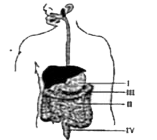
View SolutionThe given diagram illustrates the human digestive system. Which part represents small intestine ?
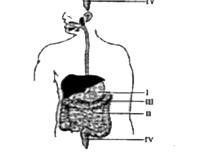
View SolutionOesophagus is the part of
View SolutionThe topmost part of the digestive system is
View SolutionThe food pipe is
View SolutionWhich of the following statements about cellular respiration in organism is true?
View SolutionThe given diagram illustrates the human respiratory system. Identify A and B.

View SolutionCirculatory system includes
View SolutionBrain is the part of
View SolutionNervous system includes
I. Brain II. Spinal cord III. Heart IV. Ear V. Liver VI. Pancreas
View SolutionThe given diagram illustrates the human nervous system. Identify spinal cord in the diagram.
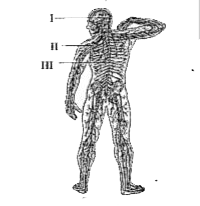
View SolutionThe given illustration represents the human excretory system.
In the given illustration, the structure labelled X represents

View SolutionWhat is the primary excretory product of humans?
View SolutionKidneys perform following functions except
View SolutionThis process of producing young ones of its own kind is called
View SolutionThe male reproductive cells are
View SolutionThe female reproductive organ is
View SolutionThe skeletal system provides shape and rigidity to the body. It also helps in protecting a number of internal organs. Which of the following internal organs is not protected by the ribcage?
View SolutionWhich of the following statements about constituents of rib cage is correct?
View SolutionThe given figure represents the human skeletal system. In the given figure, label X represents the
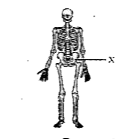
View SolutionThe given figure represents the human skeletal system. In the given figure, label X represents the
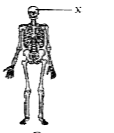
View SolutionThe given diagram illustrates the human skeleton. The structure labelled I in the given diagram illustrates the

View SolutionThe given diagram illustrates the human skeleton. Pelvic bones in the given diagram are labelled as

View SolutionMatch the following columns
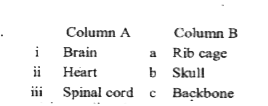
View SolutionThe given diagram illustrates the human skeleton. Which labelled structure helps in protecting the brain?
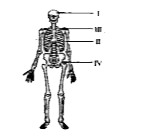
View SolutionThe given figure illustrates two arm muscles X and Y at two positions i and ii. During transition from i to ii,
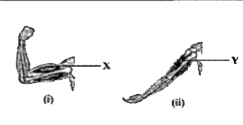
View Solution
Formative Worksheet questions and complete solutions for chapter ORGANISATION IN THE LIVING THINGS of BETOPPERS of Class 7
All Exercises from BETOPPERS Class 7 BIOLOGY ORGANISATION IN THE LIVING THINGS
- Conceptive Worksheet
- Formative Worksheet
- Summative Worksheet (II. Fill in the blanks)
- Summative Worksheet (III. Differentiate between the following)
- Summative Worksheet (IV Classify the following as ceils, tissues, organs, organ systems or organisms)
- Summative Worksheet (Multiple Choice Questions)
- Summative Worksheet (V. Name the main organs of the following systems: )
- Summative Worksheet (VI. Which of the following statements are true (T) and which ones are false (F)? Mark T or F:)
- Summative Worksheet (VII. Answer the following questions:)
- Summative Worksheet (VIII. The organs of various systems are listed in the first column of the chart. Put a tick in any of the other columns if the organ belongs to any of the systems.)